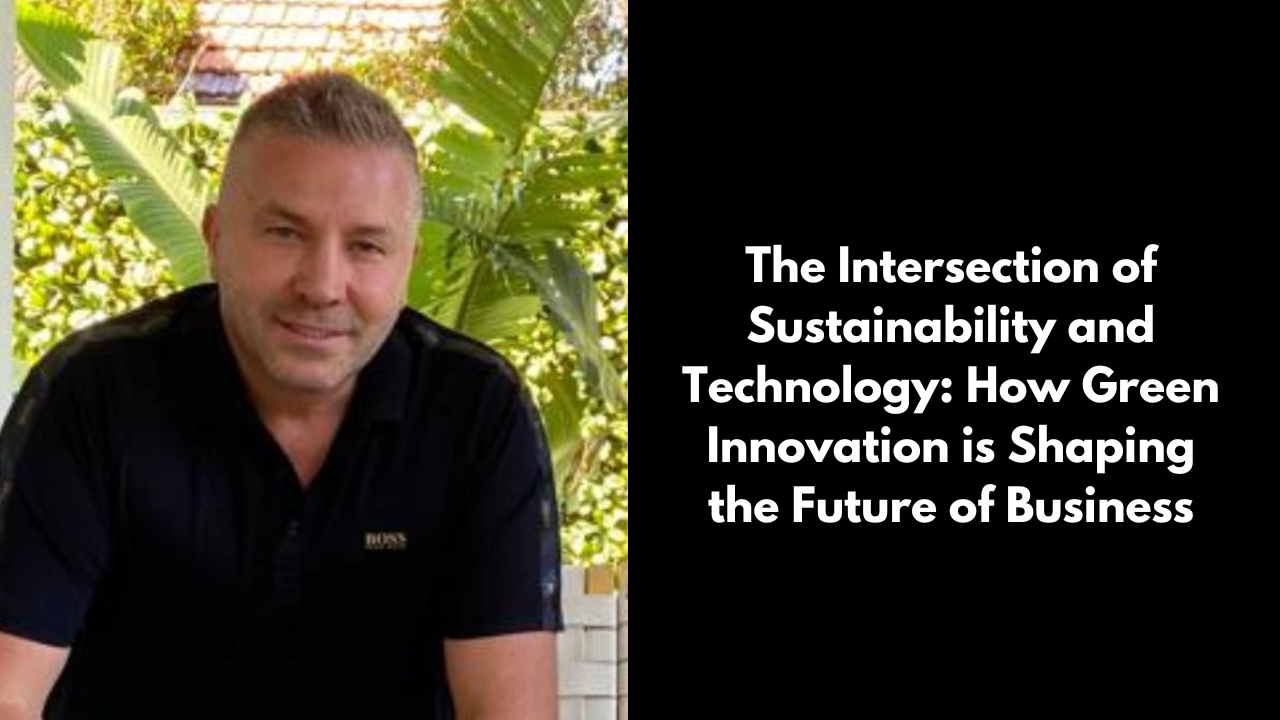In the modern world, the intersection of sustainability and technology is becoming increasingly vital as businesses strive to balance profitability with environmental responsibility. With climate change concerns escalating and consumers demanding more eco-friendly practices, companies are finding that integrating sustainability with cutting-edge technology not only helps the planet but also enhances their competitiveness in the marketplace. Green innovation is no longer just a buzzword—it’s a critical component of business strategy, driving efficiency, reducing costs, and opening new avenues for growth.
The Rise of Green Innovation

Green innovation refers to the development and implementation of products, processes, and technologies that reduce environmental impact. This concept has gained significant traction as businesses recognize the need to mitigate their carbon footprints, conserve resources, and operate more sustainably. What was once a niche concern is now at the forefront of business strategies across industries.
The convergence of sustainability and technology is a natural evolution, as technological advancements provide the tools needed to address environmental challenges more effectively. From AI-driven energy management systems to blockchain-enabled supply chain transparency, the integration of these technologies with sustainable practices is transforming how businesses operate.
AI and IoT: Powering Sustainable Operations
Artificial Intelligence (AI) and the Internet of Things (IoT) are two technological advancements that have significantly impacted sustainability in business. AI algorithms can analyze vast amounts of data to optimize energy usage, predict equipment maintenance needs, and even reduce waste. For example, smart grids powered by AI can manage electricity distribution more efficiently, reducing energy loss and lowering greenhouse gas emissions.
The IoT, with its network of connected devices, allows for real-time monitoring and management of resources. In agriculture, IoT sensors can monitor soil conditions, water usage, and crop health, enabling farmers to make data-driven decisions that reduce waste and increase yields. In manufacturing, IoT devices can monitor equipment efficiency, reducing energy consumption and minimizing downtime.
By integrating AI and IoT into their operations, companies can significantly reduce their environmental impact while also improving efficiency and cutting costs. This dual benefit makes green innovation an attractive investment for forward-thinking businesses.
Blockchain: Ensuring Transparency and Accountability
Blockchain technology, known for its use in cryptocurrencies, is also making waves in the realm of sustainability. Blockchain’s decentralized and transparent nature makes it an ideal tool for ensuring accountability in supply chains. Companies can use blockchain to track the origins of raw materials, monitor production processes, and verify the ethical sourcing of products.
For instance, in the fashion industry, blockchain can be used to trace the journey of a garment from the cotton fields to the store shelf. This transparency allows consumers to make informed choices about the products they buy and holds companies accountable for their environmental and social impact.
Blockchain also has the potential to revolutionize carbon markets by providing a secure and transparent platform for trading carbon credits. This could enhance the effectiveness of carbon offset programs and encourage more companies to reduce their emissions.
Renewable Energy: The Cornerstone of Green Innovation

At the heart of green innovation is the transition to renewable energy sources. Solar, wind, hydro, and geothermal power are rapidly becoming more affordable and accessible, making them viable alternatives to fossil fuels. Companies are increasingly investing in renewable energy to power their operations, reduce their carbon footprints, and insulate themselves from volatile energy markets.
Tech giants like Google and Apple have committed to powering their data centers with 100% renewable energy, setting a precedent for other businesses to follow. Meanwhile, startups and smaller companies are finding innovative ways to integrate renewable energy into their operations, from installing solar panels on their facilities to investing in community wind farms.
The shift to renewable energy is not just a matter of corporate responsibility—it’s also a smart financial decision. As the cost of renewable energy continues to fall, businesses can achieve significant savings on their energy bills while reducing their reliance on non-renewable resources.
Case Studies: Leading the Charge in Green Innovation
Several companies are at the forefront of the green innovation movement, setting examples for others to follow.
Tesla is a prime example of how sustainability and technology can drive business success. The company’s electric vehicles (EVs) are not only reducing carbon emissions but also revolutionizing the automotive industry. Tesla’s commitment to sustainability extends beyond its products, with the company also investing heavily in solar energy and battery storage technologies.
Unilever is another leader in green innovation, with a longstanding commitment to sustainability. The company has set ambitious targets to reduce its environmental footprint and has integrated sustainability into every aspect of its operations. From reducing plastic waste to sourcing ingredients sustainably, Unilever is proving that it’s possible to be both profitable and responsible.
IKEA has also made significant strides in green innovation, committing to become climate positive by 2030. The company is investing in renewable energy, improving the energy efficiency of its products, and sourcing materials responsibly. IKEA’s approach shows that even in industries traditionally associated with high resource consumption, green innovation can lead to meaningful change.
The Future of Sustainable Technology
The intersection of sustainability and technology is still in its early stages, with vast potential for future development. As technology continues to evolve, so too will the opportunities for businesses to operate more sustainably. Emerging technologies such as artificial photosynthesis, advanced recycling processes, and carbon capture and storage (CCS) could play a significant role in reducing environmental impact.
Moreover, as consumers become more environmentally conscious, the demand for sustainable products and services will continue to rise. Businesses that fail to embrace green innovation risk falling behind, both in terms of market share and consumer trust.
Governments and regulatory bodies are also increasingly incentivizing sustainable practices through policies and initiatives, further driving the adoption of green technologies. Companies that align with these trends will be better positioned to navigate the regulatory landscape and capitalize on new opportunities.
Conclusion: Embracing Green Innovation for Long-Term Success

The integration of sustainability and technology is no longer a choice but a necessity for businesses that wish to thrive in the 21st century. Green innovation is shaping the future of business by providing the tools and strategies needed to reduce environmental impact while driving efficiency and profitability.
As the examples of Tesla, Unilever, and IKEA demonstrate, companies that embrace green innovation are not only contributing to a more sustainable future but are also securing their own long-term success. By investing in AI, IoT, blockchain, renewable energy, and other sustainable technologies, businesses can position themselves as leaders in their industries and gain a competitive edge.
The future of business lies in the intersection of sustainability and technology. Those who seize the opportunity to innovate and adapt will be the ones who succeed in a rapidly changing world.

